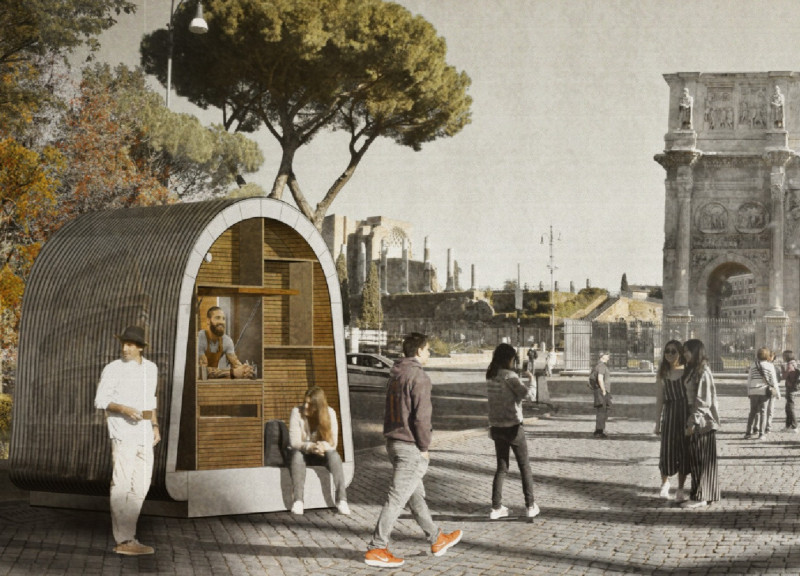5 key facts about this project
The project represents a forward-thinking approach to contemporary architecture, addressing challenges in housing and spatial efficiency. By focusing on minimalism and modularity, the design aims to provide flexible living solutions that can adjust to the evolving needs of occupants. The emphasis on environmentally responsible construction practices reflects a growing awareness of sustainability within the architectural industry.
Unique Design Approaches
One of the standout features of this project is its use of sustainable materials, such as Softwood OSB (Oriented Strand Board), recycled wood composites, and aluminum sheeting. These materials not only reduce environmental impact but also enhance the overall durability and performance of the units. The modular design allows for easy assembly and disassembly, making the structures suitable for a range of locations and climates.
The integration of natural light and ventilation further distinguishes the project. Large windows and open-plan interiors maximize energy efficiency and create an inviting atmosphere. Understanding the importance of community interaction, the designs include common areas that foster social engagement among occupants. This approach reflects a commitment to not just creating living spaces, but to building a sense of community.
Architectural Details and Functionality
The architectural details of the project significantly contribute to its overall function. The use of thermal insulation materials, such as fiberglass and mineral wool, ensures comfort and energy efficiency throughout the year. The careful consideration of materials and construction techniques has resulted in structures that are resilient and adaptable to various environmental conditions.
Additionally, the project incorporates modularity, allowing for various configurations and expansions based on user needs. This flexibility is critical in addressing potential housing shortages and is indicative of a shift towards more responsive and responsible architectural practices. The project stands as an example of how modern architecture can effectively respond to real-world challenges through innovative design and sustainable practices.
To gain deeper insights into the architecture of this project, interested readers are encouraged to explore the architectural plans, architectural sections, and architectural designs presented. These elements provide a clearer understanding of the project's functionality and unique architectural ideas.


























